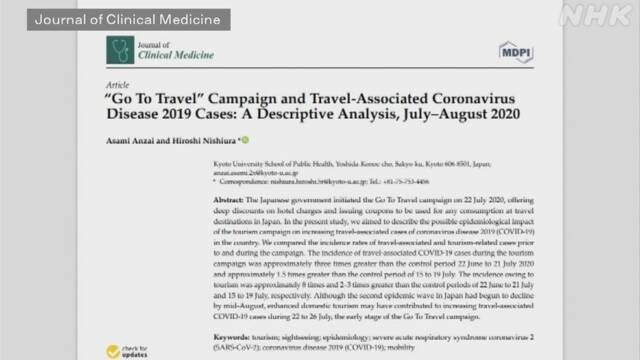A research paper that the campaign may have affected the initial stage of the increase in the number of people infected with the new coronavirus related to travel in July last year when the government's tourism demand stimulus measure "Go To Travel" began. Was announced by a group of Kyoto University.
This was published in the international medical journal "Journal of Clinical Medicine" by a group of Professor Hiroshi Nishiura of Kyoto University.
The group analyzed about 4,000 people infected with the new coronavirus reported from 24 prefectures from May to August last year, and about 20% traveled or contacted travelers before the onset of the disease. It means that he was an infected person who seems to be related to travel.
And, as a result of detailed analysis by the method of comparing the incidence rate for each period, 127 people were infected related to travel in the five days from July 22, last year when "Go To Travel" started, and the incidence rate was before. It turns out that it was 1.44 times higher than the 5 days of the week.
Furthermore, if the purpose of the trip was limited to tourism, the incidence was 2.62 times higher than the previous week's five days.
In the paper, it is not possible to determine whether "Go To Travel" led to the spread of infection by this analysis alone because there are differences in public information depending on the region, but it affected the increase in infection, at least in the early stages. He said there was a possibility, and the group said more scientific evidence was needed to find a balanced policy between controlling infections and restoring economic activity.

